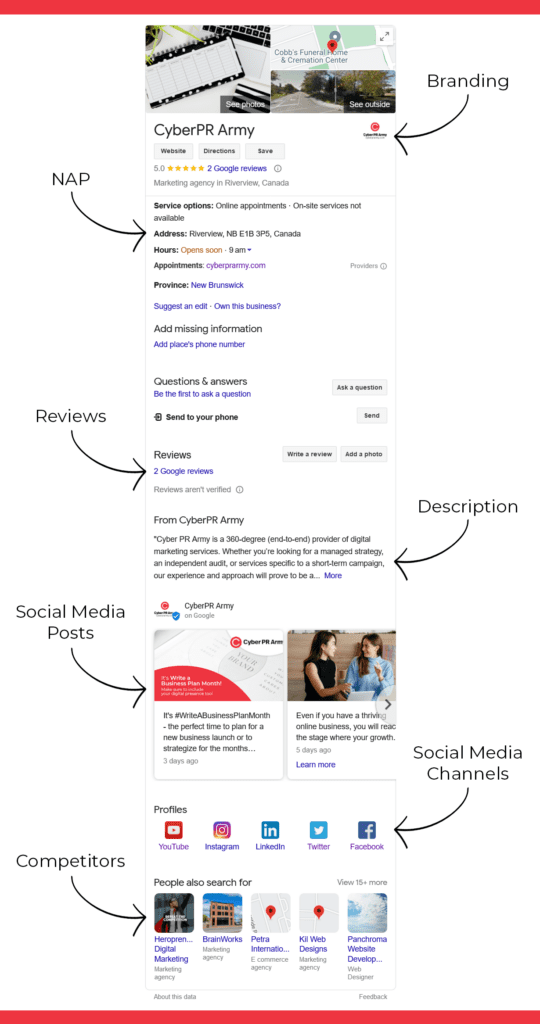
Our Ultimate Visibility-Accelerating Guide to Local SEO for 2024
Introduction to our ultimate guide to local SEO
In today’s digital landscape, online visibility is crucial for small businesses looking to thrive. Whether you are looking to grow or just getting started, one of the most effective ways to enhance online visibility is through local SEO (Search Engine Optimization). Even if you aren’t selling online, local SEO can help enhance visibility and trust, increasing the likelihood of sales in your brick-and-mortar store.
In this ultimate guide, we will dive into the world of local SEO, explain what you need to know and how it helps, and provide you with actionable strategies to accelerate your online visibility in 2024. The good news is that local SEO strategies are much easier to implement and much less competitive than those that are further reaching.
- Understanding Local SEO
- Optimizing Your Website for Local SEO
- Local Listings and Citations
- Leveraging Social Media for Local SEO
- Tracking and Analyzing Local SEO Performance
- Ready to Action Your Local SEO Strategy?
Understanding Local SEO
The term SEO gets thrown around on social media and blog sites a lot, and it can get very complex. If you are looking to be competitive on a national or international level, you will definitely need some help or a dedicated and trained staff member, but local SEO is a lot easier to manage, and with this guide, you’ll find plenty of actions you can take internally, even if you have limited knowledge, that can make a real difference to your small business.
Local SEO vs Traditional SEO
Local SEO focuses on optimizing your online presence to attract customers in your specific geographic area. Unlike traditional SEO, which targets a broader audience, local SEO helps small businesses capture the attention of local customers who are actively searching for products or services in their vicinity. Once you understand the impact of local search on your target market’s behaviour and the key factors that influence local search rankings, you can effectively leverage local SEO to your advantage and get your business noticed.
Recent studies have shown that the vast majority of consumers use search engines to find local information. When someone performs a local search, they’re typically already in the buying stage of their customer journey. This means that strong local SEO not only increases your visibility but also attracts high-quality leads who are ready to convert. For example, someone is unlikely to Google for plumbers near them unless they have an urgent need for one, and someone is unlikely to search for organic vegetables in their area if they aren’t looking to buy ingredients for this week’s dinners.
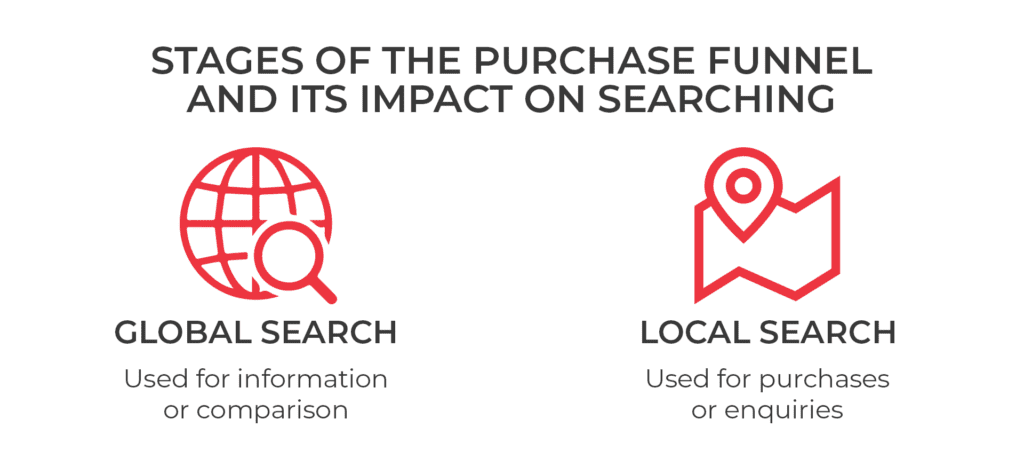
Important factors in local SEO
We’re going to walk you through the individual platforms and steps to enhance your Local SEO, but, for now, it’s important that you know which key factors have a vast influence on your business’ visibility:
- Proximity: This refers to how close your business is to the searcher. Search engines prioritize businesses that are nearest to the searcher’s location. Unfortunately, this means that if you are standing in your office and Googling yourself, your position is unlikely to be unbiased, unless you are in a private browser.
- Relevance: This refers to how well your business matches the searcher’s query. To rank well in local search, your online content should be relevant to the products or services your local customers are searching for.
- Prominence: This refers to how well-known your business is. Search engines consider information from across the web, such as links, articles, and directories, to determine your business’s prominence.
- Online Reviews: Positive reviews can significantly impact your local search rankings. They not only build trust with potential customers but also signal to search engines that your business is reputable.
- On-Page SEO Factors: These include title tags, headers, meta descriptions, and content that is optimized with local keywords.
- Citations: These are online references to your business’s name, address, and phone number (NAP). Consistent and accurate citations across various online directories help search engines verify your business and improve your local search rankings.
Understanding these factors at a basic level will help the overarching plan make more sense and help you craft a more effective Local SEO strategy to significantly boost your online visibility.
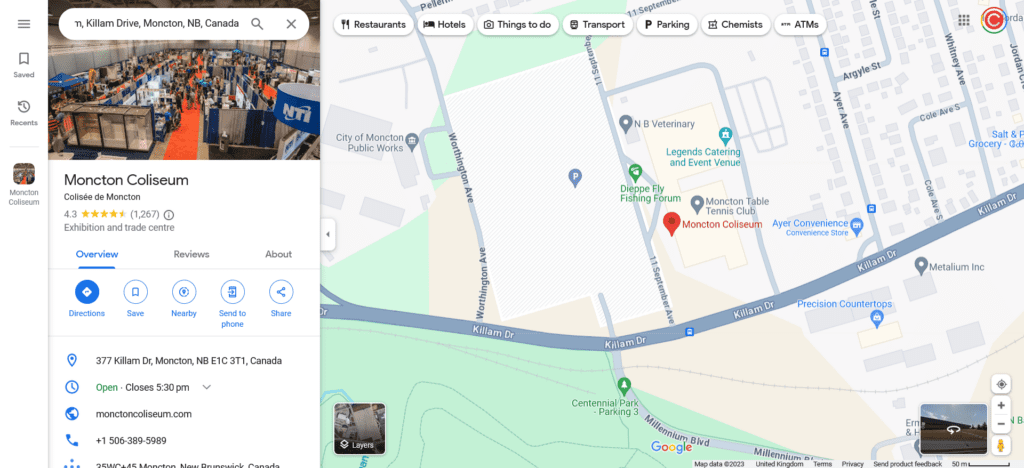
How central your location is to the middle of your city makes a difference, but deceptively claiming to be somewhere you’re not, can lead to your business being banned.
Optimizing Your Website for Local SEO
Your website serves as the foundation for your local SEO efforts. If you don’t yet have a website, yes, you should absolutely create one, even if it is only a single page to start. For now, we’re going to assume you have a website up and running.
Mobile first for rankings
In 2023, Google switched from mobile-optimized to mobile-first for SEO ranking. In layman’s terms, this means that the mobile version of your website will be what your ranking is predominantly judged on, followed by the desktop version. Many small businesses have relied on their desktop version and not paid much attention to their mobile site; this tide-turn means improving your mobile website is urgent!
Along with being mobile-friendly, your website should be fast-loading, and optimized for local search terms. We’ll provide you with tips on optimizing your website content, conducting keyword research, building high-quality backlinks, and utilizing structured data and schema markup. These strategies aren’t as complex as they sound, and they will help search engines understand and rank your website better in local search results.
Load time for SEO
Your website’s load times significantly impact user experience and, as a result, search engine rankings. You can use free tools like Google’s PageSpeed Insights to check your site’s speed. Common issues are having too many large images that are in older style formats, such as PNG, embedding multiple videos on a single page, or using too many plugins or code snippets on a single page.

Website content
Your website content should be high-quality, relevant, and informative. You definitely cannot rank well anymore with low quality-content that does not add value for the reader. The length of your information can vary depending on your topic, but you cannot compromise on quality or relevance.
Regularly updating your blog continues to be a sound strategy. Add articles about local events, industry news, or educational content that your local audience will find valuable. It is no longer necessary to force keywords unnaturally or repeat them over and over. Write as you would talk, be make sure to include local keywords naturally in your content where they fit best. For example, if you’re a bakery in New Brunswick, you might write a blog post titled, “Our Top 3 Best Freshly Baked Breads in New Brunswick” or, “Why New Brunswick bakeries embrace traditional methods”.
Local keywords
You also want to add local keywords in natural places across your website. These are terms that your local customers might use to find your business. Free tools like Google’s Keyword Planner can help you research local keywords, but as a rule, you’ll want to think about how people might describe your business with some synonyms (a doctor can also be a medical centre or a healthcare provider, for example) and how people will describe the area (will they type Riverview, Albert County or New Brunswick?). Incorporate these keywords into your website content, especially on your homepage and about pages, but it’s also great practice to add them to your meta tags, URLs, and alt text in a way that reads naturally.
If you don’t have a clue what these elements are, we’ve got you covered. You can check out our SEO course here.
Title Tags and Meta Descriptions
Title tags and meta descriptions are crucial on-page SEO elements. If you are on WordPress, installing a free app like Yoast will make these really easy to add and adjust, whereas Wix, Shopify and other platforms will have options instantly available to you. Your meta descriptions should be unique to each page but include your target local keywords where they naturally fit. The title tag should be an accurate and concise description of a page’s content, and the meta description should provide a brief summary of the content on your page. An example of a title tag that is Local SEO optimized would be calling a page Digital Marketing in New Brunswick instead of Our Services.
Structured Data and Schema Markup
This bit is a little more technical, but that doesn’t mean you should shy away from it. Using structured data and schema markup can help search engines better understand your content. As a local business, there is a prebuilt Local Business Schema that you can apply to your website. It will provide search engines with more information about your business like the type of business, operating hours, and location. SEO plugins for WordPress like Yoast will automatically use the right schema for each page. If you’re not on WordPress, you can use Google’s Structured Data Markup Helper to generate the HTML for you and guide you through the process of applying it.
NAP Consistency
This is a surprisingly big element of Local SEO and yet many small businesses aren’t aware of it. While we are currently looking at on-site Local SEO, this absolutely continues outside of your website, too. Your business’s name, address, and phone number (known as NAP) are a marker of trustworthiness and professionalism. Keep them consistent across your website, and with AI tech rolling out, this doesn’t just mean visibly. You may have changed your email address or phone number and not updated it everywhere (check your footer for a common offender!) or, as is sometimes the case, the email appears as owner@company.com but the hyperlink goes to joeisgreat@gmail.com. This inconsistency may not be apparent to your potential customers, but it is visible to Google!
Local Business Location Listings
If your business has multiple locations, make a dedicated About page for each one. But (and this is a big caveat) don’t just copy and paste the same information! That is a big no-no in SEO so get creative with the content. Show the staff at each location, their photos of jobs they have completed, and the differing services if there are any. This works really well as you can cross-promote to reach more people. For example, someone may come to your page wanting double-glazing, but branch A only does sunroofs. Rather than leaving and finding someone else, you can call out that branch B could also service their needs, “Looking for double glazing in Moncton? Our Saint John office can help you.”
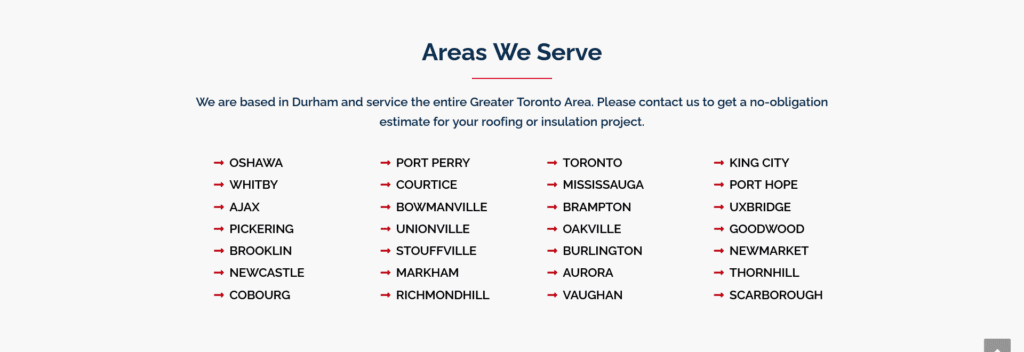
Internal Linking
Linking between your pages helps your business to build authority and, in the example above, can even help you capture more leads. Keep it relevant, but be aware that links will help you to appear legitimate, established and informative. Linking products and blog posts is tried and tested and can help you to attach keywords from one page to the other. For example, if you have a product that you sell across New Brunswick, but a blog post focused on how it is really beneficial in Shediac specifically, you can keep the keywords for the product focused on New Brunswick’s larger catchment area, while linking back and associating the product with use specifically in Shediac to give it an extra boost.
Website SEO is Continuous
Remember, optimizing your website for local SEO is a continuous process. As you add content, try to associate it with other pages, and see it as part of the larger Local SEO strategy. Set dates in your calendar to regularly audit your website to identify areas of improvement and stay updated with the latest SEO trends and best practices.
Your website serves as the cornerstone of your Local SEO strategy. Take care of it so it can help you grow your business.
Local Listings and Citations
Business listings across the internet (off-page SEO) play a decisive role in your Local SEO strategy. Years ago, businesses and black-hat SEOs would add themselves to any and every directory going, most of which were set up purely to allow backlinks, but Google got wise, so hold your horses!
While business listings (also known as citations) can be really important for your visibility, they can be hugely damaging if you add too many poor-quality links. We want links that enhance credibility and make it easier for potential customers to find and contact your business, so we need to be strategic when setting up links. Here are the listings you should absolutely set up for Local SEO success.
Google Business Profile
Formerly known as Google My Business, claiming and optimizing your Google Business Profile is arguably the most important step in your Local SEO strategy. Google remains the most popular search engine and your Google Business Profile acts as your business’s virtual storefront.
Your Google Business Profile shows on the right side of the screen when someone Googles your business and holds a wealth of information.
Here’s how you can optimize your Google Business Profile:
- Claim Your Profile: The first step is to claim your business on Google. If your business is already listed, you can claim it. If not, you’ll need to create a new listing.
- Complete Your Profile: Fill out all the sections in your profile including your business name, address, phone number, website, categories, attributes, products or services, business hours, and a detailed business description. The more complete your profile, the higher the chances of ranking well in local search results. N.B. Do NOT be tempted to add additional SEO keywords to your business name. This is bad practice and if you are reported, it will damage your placement and be instantly removed. You CAN include keywords that are legitimately in your name, for example, our client Maritime Window Film Specialists.
- Verify Your Profile: Google needs to verify that your business is legitimate and that you’re the owner. The verification process typically involves receiving a postcard from Google with a verification code and verifying your email and sometimes your phone number. This is a worthwhile step so don’t skip it!
- Add High-Quality Photos: Photos add credibility and appeal to your profile. Upload a variety of high-quality photos, including your logo, storefront, products or services, and your team.
- Collect and Respond to Reviews: Encourage your customers to leave reviews on your profile by adding a link to your post-sale follow-up email or asking them in person. Positive reviews can significantly improve your local ranking and attract more customers. Respond to all reviews, whether they are positive or negative, in a professional way as this demonstrates your commitment to customer satisfaction.
- Utilize Google Posts: Google Posts allow you to share updates, events, offers, and more directly on your Google Business Profile. Regularly posting relevant content can keep your profile fresh and engage your audience. We recommend reposting content from your social media feed. Many social media scheduling tools allow you to schedule for Google Business Profiles at the same time.
Bing Places
Don’t overlook Bing Places, Microsoft’s equivalent of Google Business Profile. It may not be as glamourous or well-known, but it can definitely still help you reach more potential customers. The process for claiming and optimizing your Bing Places listing is similar to Google.
Local and Trade Organizations
Being listed in local business directories and trade organizations can boost your local SEO efforts and genuinely make you more visible in that community. These listings provide valuable backlinks that Google views as legitimate, so they increase your online visibility and authority. Make sure your business information is consistent and accurate across all directories, of course, but cast a wide net here as many organizations have huge benefits outside of the Local SEO bump.
Look at your local Chamber of Commerce and local, regional or national trade organizations. If you’re female, consider joining Women In Business. Look at Better Business Bureau, entrepreneurial and business owner associations, and anywhere else you can think of that would be of genuine value to your business. These organizations often offer fantastic networking opportunities and potential collaborations.

Online Reviews
How often do you check online reviews before you purchase? If you’re like most of the developed world, we’re guessing a lot! Online reviews are a significant local ranking factor as they are a tangible way for potential customers and search engines to rank you. Encourage your customers to leave reviews on various platforms, such as Google, Facebook, Yelp, and Trustpilot. Regularly monitor and respond to these reviews to manage your online reputation.
NAP Consistency
We mentioned it when we were looking at your website, but make sure you add the same name, address, and phone number (NAP) to all your listings. Inconsistent NAP information can confuse search engines and potential customers, negatively impacting your local SEO.
Citations for Local SEO
Leveraging local listings and citations is a great way for you to enhance your online visibility, establish your business’s credibility, and ultimately drive more local customers to your business. We recommend you keep a record of where you’ve added your business so you can update information as needed and keep it consistent in the long term.
Leveraging Social Media for Local SEO
Social media platforms present a wealth of opportunities to boost your local visibility, but you should make sure you have the foundations in place first, i.e., your website and Google Business Profile. Get to know where your potential customers are hanging out online and join them on those social media channels.
Here’s how to make it work for your Local SEO strategy:
- Choose the Right Platforms: Not all social media platforms will be relevant to your business and trying to be active on all of them may stretch you too thin. Identify where your local audience spends their time and focus your efforts there. Facebook and Instagram are popular choices for B2C. If you sell at least partially to other businesses, LinkedIn should be on your list.
- Optimize Your Profiles: Make sure your social media profiles are complete and consistent with your other online listings. Yes, it’s our NAP again! Make sure you add these in a consistent way, and add links to your website and other social media accounts for maximum cross-population! According to Google, your social media accounts don’t directly affect your SEO ranking, but SEO experts the world over still believe it is a factor, even if not directly.
- Engage with Your Local Community: Engage with your local audience on local matters! Share updates about local events, participate in local discussions and respond to comments and messages promptly to build a sense of community and togetherness.
- Share Local Content: Share content that your local audience will find valuable. This could be blog posts, videos, infographics, or photos related to your local area or industry.
- Promote Reviews and Testimonials: Share positive reviews and testimonials on your social media profiles. This can help build trust and attract more local customers and is especially effective in small communities where people recognize your reviewers.
- Use Local Hashtags: Using local hashtags can help increase your visibility among local users. Research popular hashtags in your area, such as #nb for New Brunswick or #loveforlocal for the local campaign.
- Tag Businesses and People: If you have partnered with another small business or are just enjoying their product, tag them in your posts (with permission) to give them a little boost in exposure. Chances are, they will reciprocate, showing their audience your channel and creating more local backlinks to your business.
By leveraging social media, you can increase your local visibility, build relationships with your customers, and ultimately boost your local SEO efforts.
Tracking and Analyzing Local SEO Performance
It’s all well and good diving into Local SEO, but if you don’t monitor your efforts, how do you know if it is paying off? There are plenty of fancy reporting platforms that will churn out data till the cows come home, but there are plenty of simple ways you can check your local SEO performance:
- Track Local Rankings: Using free plans on tools like SEMrush can help you track your local search rankings for your target keywords.
- Analyze Website Traffic: Google Analytics is a veritable treasure trove of information and can provide valuable insights into your website traffic, including where your visitors are located, which pages they visit, and how long they stay on your site. This is especially useful if you are a local business; if too many people outside your catchment area are viewing your website, you may need to adjust your wording or make more of a push in your Local SEO strategy.
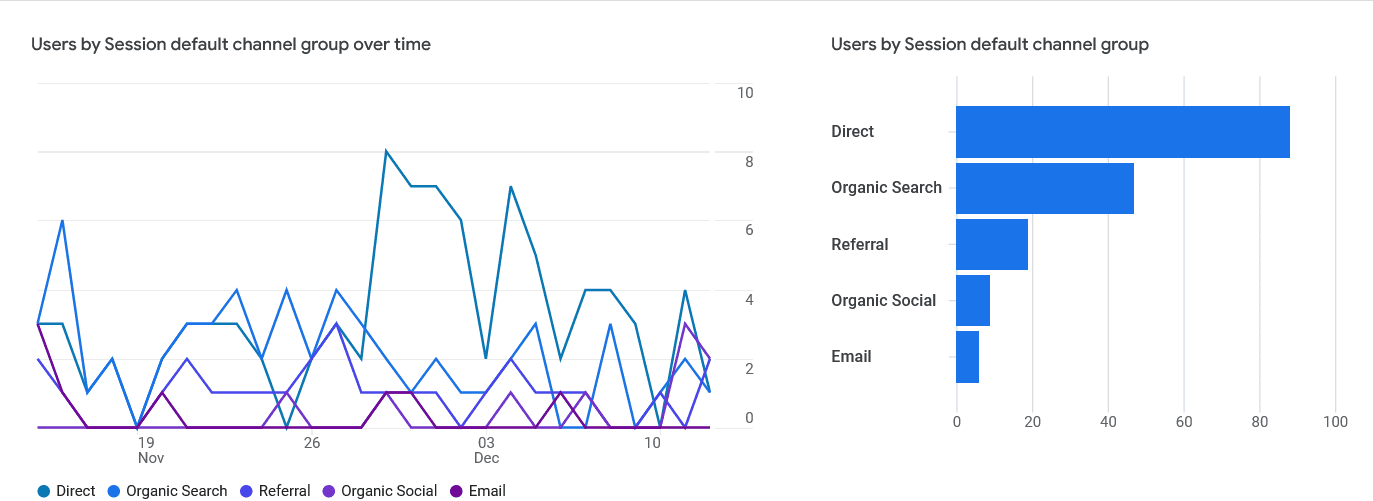
- Use Google Business Insights: Google provides insights into how people find your business listing on Google. You can see how many people found your listing through a direct search versus a discovery search, among other metrics.
- Conduct Regular SEO Audits: Regular SEO audits can help you identify issues and opportunities for improvement. You can use tools like Google Search Console or Moz to conduct these audits.
Set up tracking tools as you start actioning your Local SEO strategy and set yourself a reminder to analyze your data every quarter. Sometimes, simple changes can make all the difference. A new piece of content or rewording your content could potentially skyrocket your traffic if it’s done effectively and with Local SEO in mind. With the data at your fingertips, you’ll be able to react to what your audience is looking for and continuously refine your strategy.
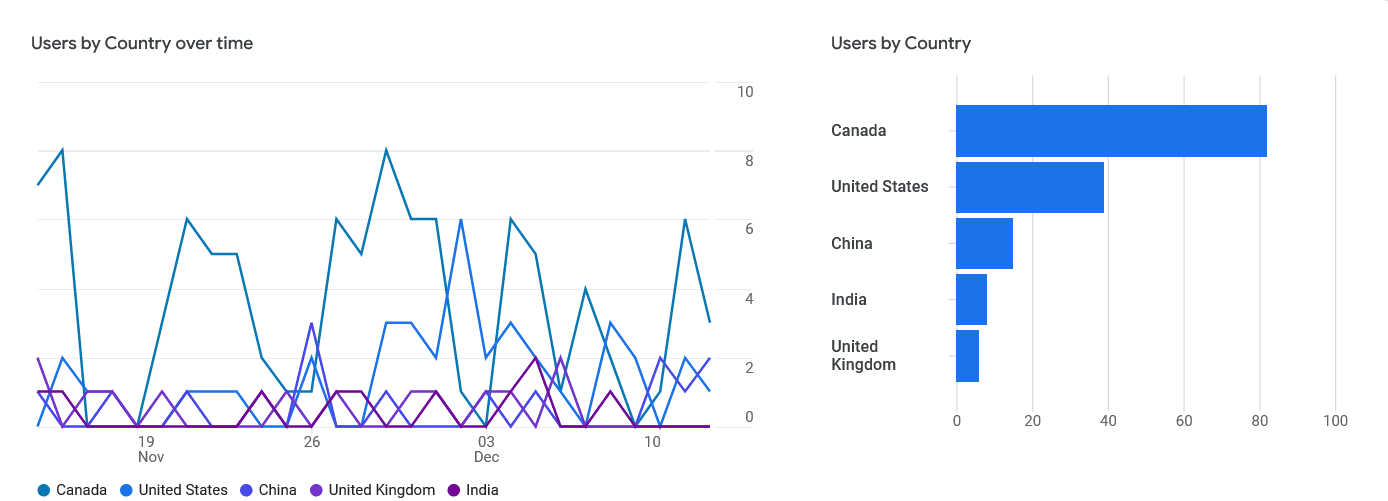
Ready to Action Your Local SEO Strategy?
We hope our Ultimate Visibility-Accelerating Guide has helped you explore the key facets of local SEO, get to grips with how it can help your business, and given you some ideas for how to amp up your local online visibility. By understanding the importance of Local SEO, optimizing your website, leveraging local listings, utilizing social media, and monitoring your performance, you’re well-equipped to boost your online visibility and attract more local customers.
Remember, Local SEO isn’t a one-and-done endeavour. You will need to optimize and adapt to the ever-evolving digital landscape if you want your strategy to keep paying off. But don’t get too change-hungry either! Continuously tweaking your strategies can hinder your efforts, so remember that SEO is a long game. Building online visibility takes time, but the results are well worth the effort. Here’s to your success in local SEO in 2024 and beyond!
Jump into SEO Fundamentals for Small Business Owners to learn more about SEO at your own pace.

